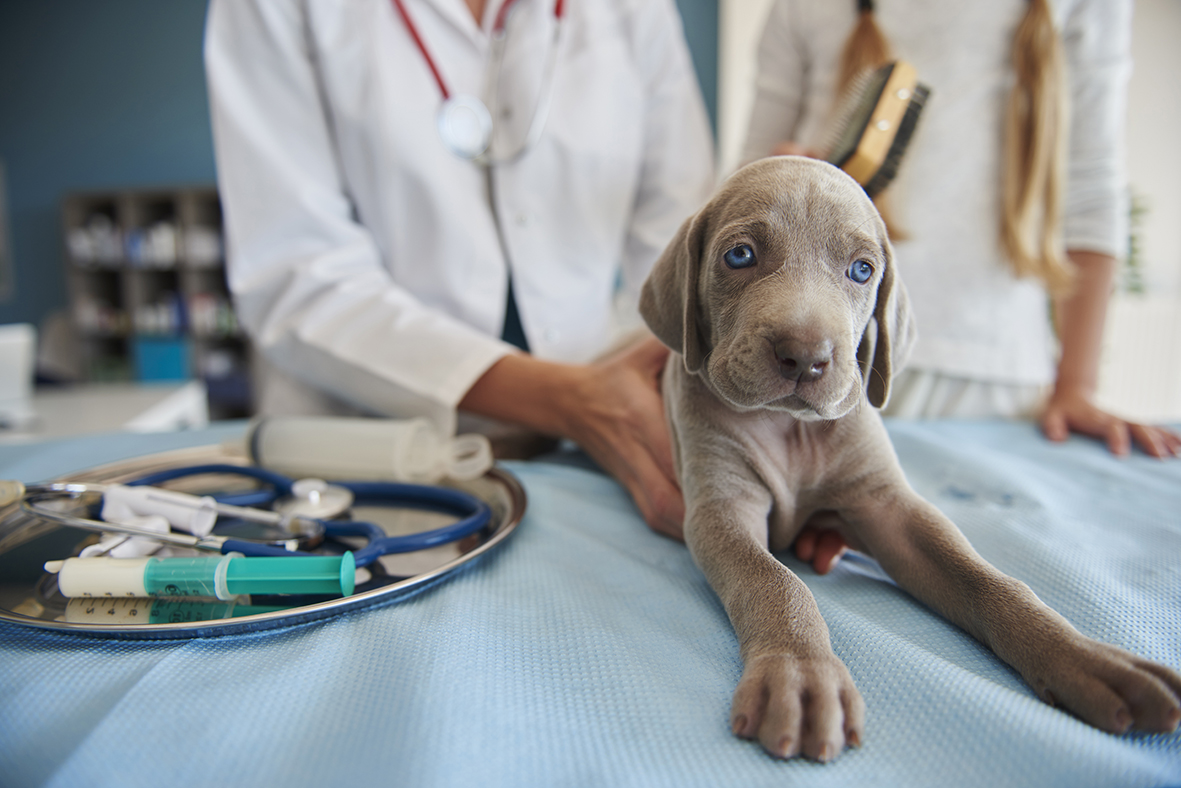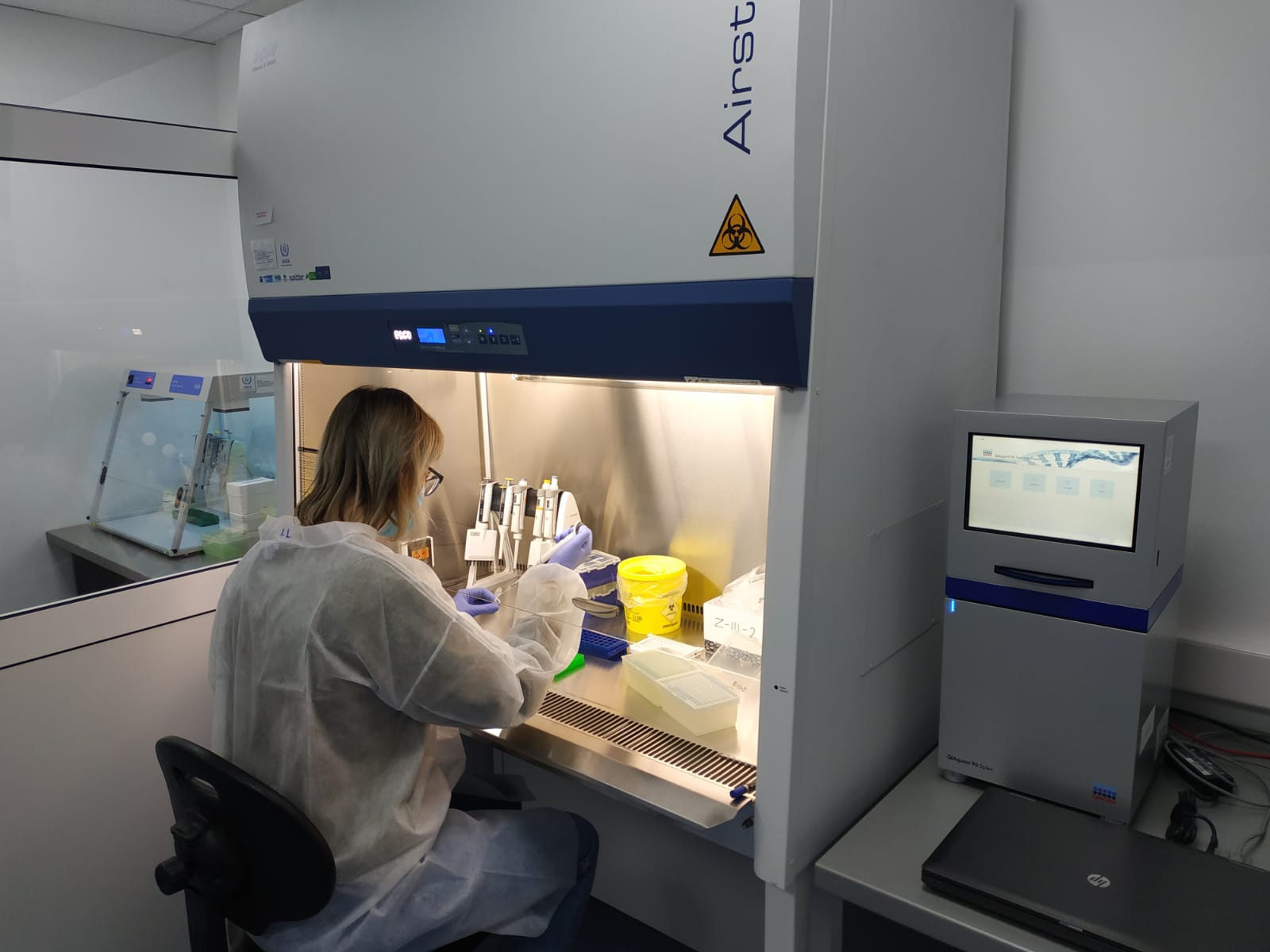
If you would like to learn more about the IAEA’s work, sign up for our weekly updates containing our most important news, multimedia and more.
Croatian studies clarify the role of animals in the spread of COVID-19
Monica Exner

An IAEA-backed Croatian study confirmed that, for now, COVID-19 can be transmitted from humans to dogs but not from dogs to humans. (Photo: Freepik.com)
The virus that causes COVID-19 can be transmitted from humans to dogs but not various species of other wild and captive animals, Croatian researchers have found. In two separate studies, results indicated that dogs are not a source of human infections, and that the COVID-19 virus has not been transmitted from infected people or the environment to a limited selection of wild and zoo animals. The study was the first time that circulation of the virus was studied between people and wild animals.
With support from the IAEA in cooperation with the Food and Agriculture Organization of the United Nations (FAO), researchers used real-time reverse transcription polymerase chain reaction (rRT-PCR) to test clinical samples. RT-PCR, the most reliable method to detect specific genetic material from pathogens, including viruses, is a nuclear-derived technique. Nearly 300 laboratories worldwide, including the Croatian Veterinary Institute and the Faculty of Veterinary Medicine at the University of Zagreb, received equipment packages from the IAEA to support the detection and characterization of virus strains and to help local authorities combat the virus. The equipment was used to evaluate test samples from people as part of the country’s drive to lower infections, but when there were no human samples to test, scientists used the equipment to conduct the experiments for the animal study.

An expert from the Croatian Veterinary Institute prepares samples for COVID-19 detection by RT-PCR in a molecular laboratory of the Virology Department at the Croatian Veterinary Institute in Zagreb. (Photo: L. Jemersic/Croatian Veterinary Institute)
Global support, local testing
In response to the COVID-19 pandemic, the IAEA – through an interregional technical cooperation project – has provided equipment and materials to laboratories in 128 countries to help combat the virus. The project was established in 2020 to respond to countries’ needs in the event of disease outbreaks, emergencies and disasters. As a result of the IAEA’s assistance, countries have built their capacity to prepare for and respond to threats and outbreaks of zoonotic diseases. Furthermore, in Croatia, the FAO/IAEA’s technical support led to greater understanding of the transmission of the coronavirus.
“Besides supporting public health authorities, we have contributed to clarifying the role of animals in the epidemiology of this new disease on a global level and study the impact of infections on animal health and welfare,” said Ljubo Barbic, Head of the Virology Laboratory at the Faculty of Veterinary Medicine in Zagreb.
The results of the research are significant, given concerns of possible infection via animals. Because the virus could behave differently in otherwise similar animal species, testing for each specie is required to rule out – or confirm – possible transmission of the virus to humans, said Ivancho Naletoski, Animal Health Technical Officer at the Joint FAO/IAEA Centre of Nuclear Techniques in Food and Agriculture.
“The support provided by the IAEA was crucial for building and upgrading laboratory capacities for early and accurate detection of the virus in humans but also in animals, as potential reservoirs of the infection but also for emergency preparedness when faced with COVID-19 or similar infections in the future,” said Lorena Jemersic, Head of the Virology Department at the Croatian Veterinary Institute.
The content of the IAEA COVID-19 testing packages
- Core equipment and accessories (including PCR thermocyclers) required to run the tests, as well as biosafety cabinets level 2 and 3 required to ensure the safety of laboratory staff and prevent spillover of the infection from the routine samples;
- Personal protective equipment (PPE), including overalls, boots, masks, gloves and goggles to protect personnel from contracting the virus, as well as preventing the release of the virus into the environment;
- A set of diagnostics kits required to detect the presence of the COVID-19 virus using the rRT-PCR.

